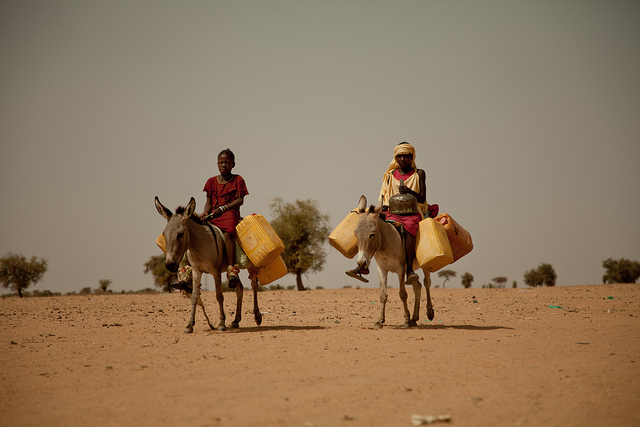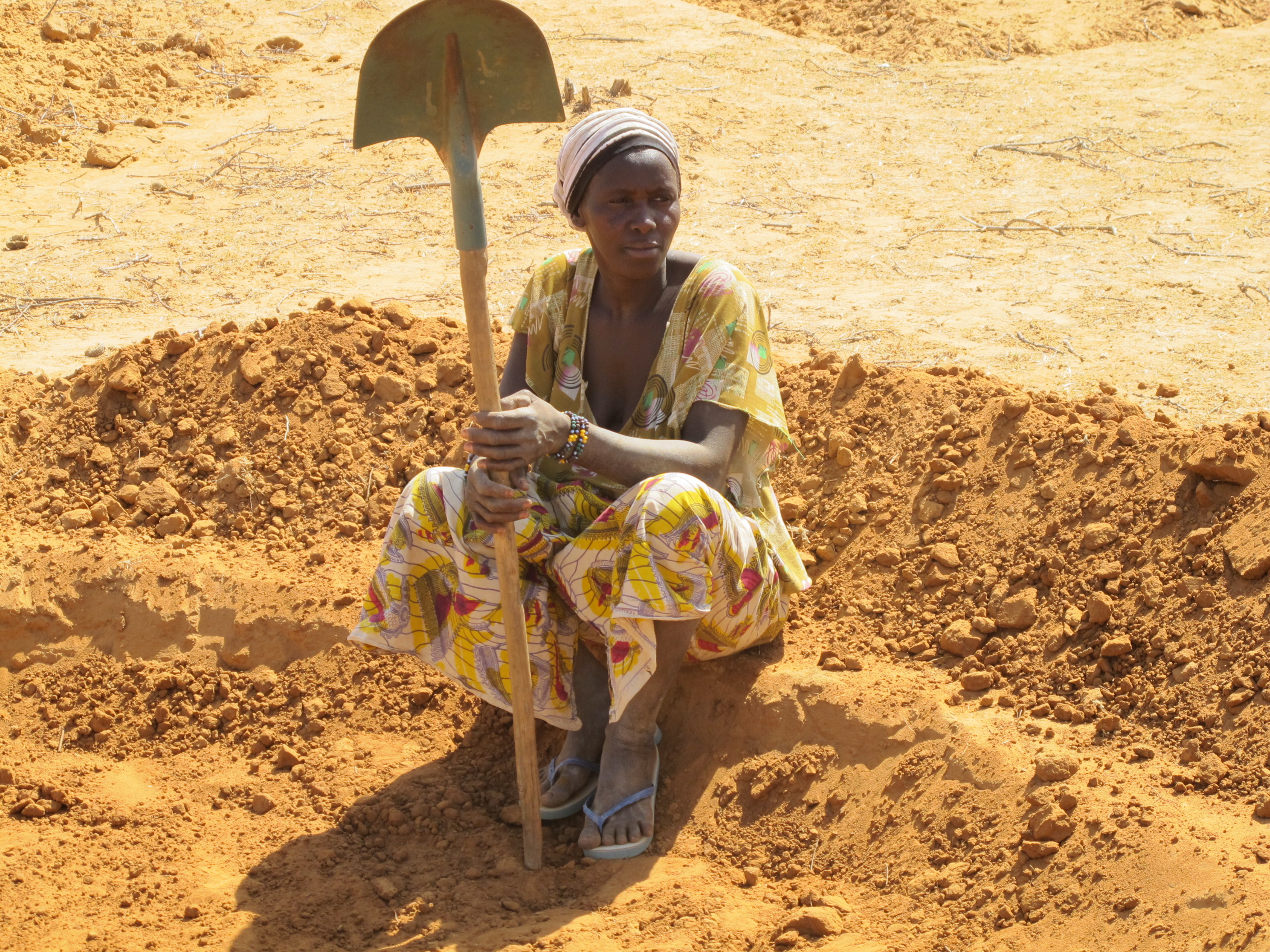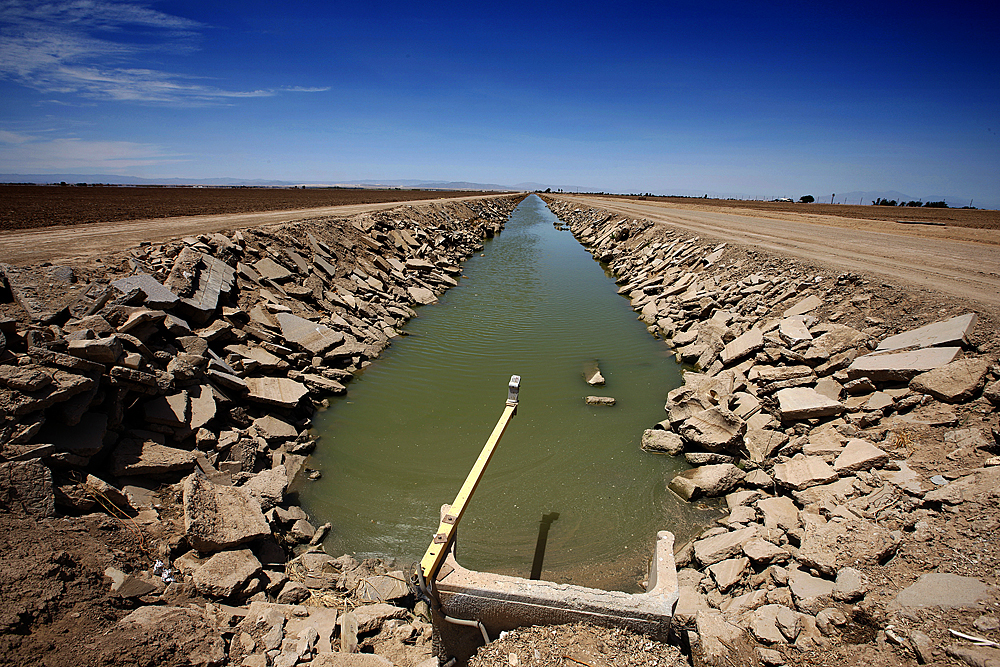Food Security: Race to Prevent Famine As Drought and Food Crisis Plague Africa’s Sahel
An estimated 10 million people are struggling with growing food shortages in Burkina Faso, Chad, Gambia, Mali, Mauritania, and Niger, which have all declared emergencies and appealed for international assistance. Aid agencies and governments are now bracing to reach remote communities before the situation deteriorates into a famine.
By Codi Yeager
Circle of Blue

Gambia has become the latest African nation to appeal for food aid. Last week, the Gambian government announced that 70 percent of food crops in the country had failed due to poor rains.
In asking for $US 23 million in seeds, fertilizers, and food aid, Gambia has joined a string of other countries in Africa’s sub-Saharan Sahel region, where about 10 million people are facing a food crisis this year. Burkina Faso, Chad, Mali, Mauritania, and Niger have already declared emergencies and have appealed for international assistance.
Droughts have caused the failure of many harvests of rice, groundnuts, millets, maize, sorghum, and other staple crops, leaving little food to be stored in the region’s granaries. Aid agencies and governments are now bracing to reach remote communities before the situation deteriorates into a famine.
The Sahel strip, which runs along the southern edge of the Sahara Desert, is no stranger to droughts. But the dry spells here have occurred more frequently in the last decade, leaving communities little time to refill their food stocks before the next poor harvest hits.
“We do see that there are more and more climate-related disasters, with numerous years of drought becoming more and more frequent,” Rene McGuffin, a senior spokesperson for the United Nations’ World Food Programme (WFP), told Circle of Blue. “Because of the increasing frequency of droughts, communities have very little time to recover. Many families have not recovered from the food crisis in 2010 — maybe they lost assets, had to sell livestock — but they haven’t been able to rebuild.”
–Rene McGuffin, spokesperson
UN World Food Programme
USAID’s Famine Early Warning System predicts that crisis-level acute food insecurity will persist in regions of the Sahel until September, with the effects becoming most evident by April. Crisis-level food shortage, the so-called “phase three” on the Integrated Food Security Phase Classification (IPC), means that households might experience short-term instability, significant food consumption gaps, and high malnutrition. To cope, families may have to sell assets and divert money from essential non-food items.
“Selling assets that will enable them in the future to be self-sustainable is what we don’t want them to do,” McGuffin said.
Food Prices
Selling livestock and other assets, however, is often the only way that families can scrape by when droughts destroy subsistence crops and send regional food prices soaring.
“Food prices have risen dramatically for staple foods like cereals,” McGuffin said. “Food prices normally fall after the harvest, because there is more supply. But, because of the drought, they have actually risen during this time.”
In Niger, one of the hardest-hit countries, millet prices are 36 percent higher than last year and well above their 20-year average. Sorghum prices are up 34 percent, and maize prices have increased 24 percent from 2011 and will continue to rise, according to McGuffin. Food prices remain high but stable in Mali and Burkina Faso.
Reaching Communities in Time
The situation echoes back to last year’s humanitarian crisis in the Horn of Africa, when — despite early warning forecasts going back to 2010 — the international community did not scale up its relief efforts until three areas of Somalia were declared famine zones in July 2011.
This year, governments and aid agencies have mobilized early in attempts to mitigate the food shortages, before the situation deteriorates into a famine. The United Nations called a meeting of aid organizations in mid-February to organize a response to the crisis, and the WFP has been collecting donations, with the hopes of raising $US 650 to $US 700 million. Last Friday, the charity Oxfam International also launched a $US 36.3 million emergency appeal for West Africa.

Famine conditions developed in Somalia last year, in large part because the Islamist militant group Shabab was blocking most aid agencies from accessing the regions it controlled.
“In the Horn of Africa, it was the worst drought in decades, but we only had famine in an area where aid organizations couldn’t reach,” McGuffin said. She added that the poor infrastructure across the Sahel region could hinder efforts to reach remote communities in the next weeks and months. “We can do a lot, but the time to act is now ,in order to avoid a real crisis. It will take time to respond, but we know what needs to be done.”
Sources: Famine Early Warning Systems Network, Reuters
A news correspondent for Circle of Blue based out of Hawaii. She writes The Stream, Circle of Blue’s daily digest of international water news trends. Her interests include food security, ecology and the Great Lakes.
Contact Codi Kozacek









Leave a Reply
Want to join the discussion?Feel free to contribute!